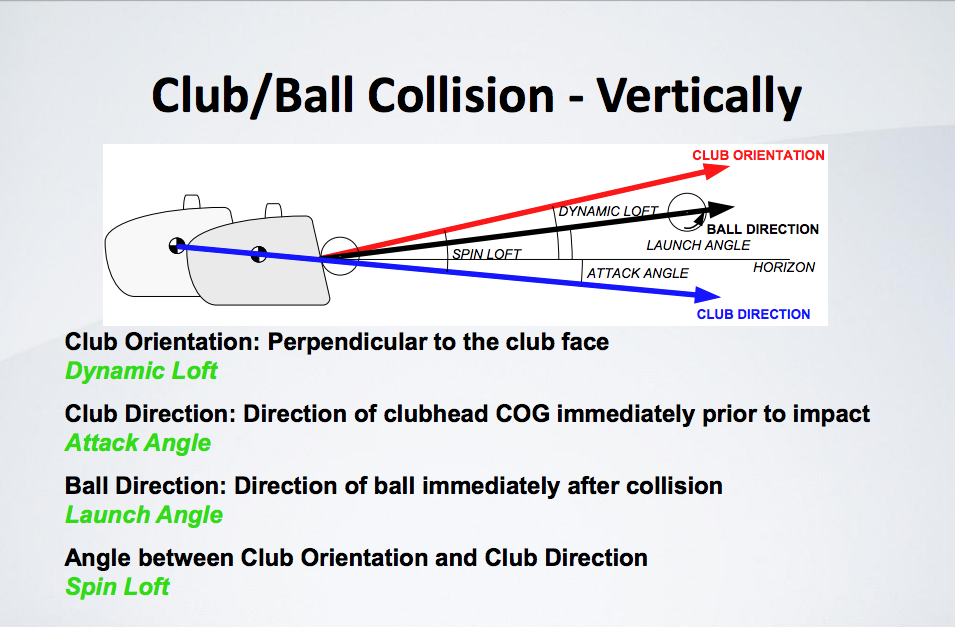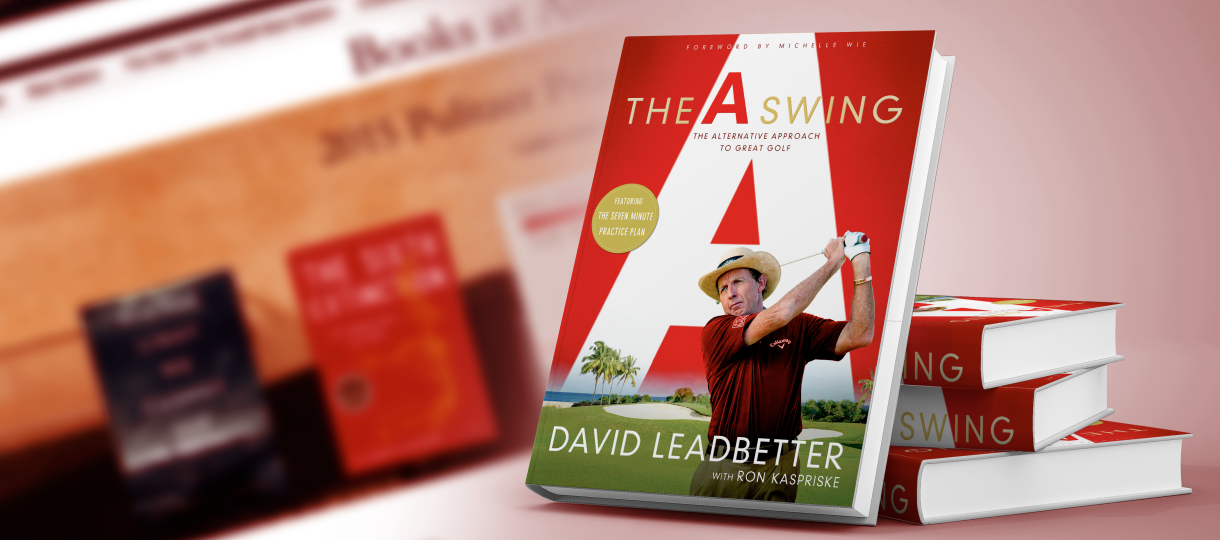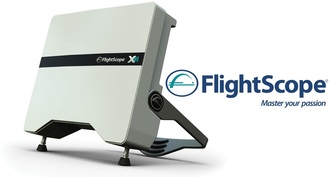What is Spin Loft. Spin loft is a calculation of these angles and is found using this equation: dynamic loft (actual loft at impact) - angle of attack = spin loft.
Now here is where it can get confusing: Spin loft does not mean spin rate per second. The rotations per minute (RPM) of a golf ball is the actual spin rate. Spin loft is one of the factors that causes spin rate, but it is not the only factor. A higher spin loft, however, will always increase spin and slow down ball speed, and vice versa. If you look at the chart below, the gap between the red and blue lines is the spin loft. It is measured in degrees, not RPMs.
So let’s say a shot struck with a 6 iron has a dynamic loft at impact of 20 degrees and an attack angle of negative 4. The spin loft of that shot, 20 minus negative 4 (remember your double negatives?), is 24 degrees.
This is a very important point to understand because spin loft is also a matter of compression, which is a measure of how directly a ball has been struck. When the spin loft is low, the compression is high — the hit is more direct. When spin loft is high, the compression is low – the ball spins more and the ball speed is reduced with the ball been compressed less.
Look at the chart below: The narrower the gap between the red and blue lines, the more the golf ball is compressed and the further it will go. In the example, there is no change in the gap, so hitting down did not spin the ball more; it simply launched it lower.
A zero spin loft would be the most compression we could have, but it’s not posssible because the golf ball would not have enough spin to stay in the air.

So what does all this mean to the average golfer? Well let’s say, you’d like to learn how to hit a low wedge shot that comes to stop on a penny by the hole. Since you understand the dynamics of spin and launch, let’s go through the conditions that allow the low-flying, high-spinning wedge shot to happen:
To hit a low wedge shot, golfers need to get a low launch factor, which means they have to de-loft their wedge by getting their hands in front of the clubface. But you know that reducing loft, the biggest factor of spin, actually decreases the amount of spin, so the low-flying wedge shot seems like an anomaly, especially when you add the fact that you can’t increase the speed on short shots because that would make the ball go too far.
So the magic of the high-spinning, low-flying shot is a low spin loft – remember the gap?
In order to have low spin loft, the angle of attack and loft have to be closer together. To make the spin loft as narrow as possible with a wedge, that wedge has to be de-lofted and have a very shallow angle of attack.
Think about it — if a golfer hits down too much, the spin loft “gap” would become wider and the compression would get lower. In those conditions, the golf ball does not “grip” the face as well; friction is reduced and spin goes down.
However, studies show that a very shallow attack angle (which is slightly downward with a wedge) and a de-lofted face produce the optimum friction, or grip of golf ball and club. The ball flies low, spins a lot and checks after two, sometimes three bounces. In short, you will be the envy of your foursome.
Here’s something else to consider: You should always keep not only your grooves clean, but the surface area between the grooves rough, a perfectly legal thing to do, because it to optimizes friction.

Final checklist for spin
- Clean your grooves and keep the surface area between the grooves roughened.
- Play a premium golf ball; one that allows for spin to happen.
- Do not expect spin off any lie where contact with the golf ball first is impossible; example — shot from the rough, especially ones that are into the grain, as they limit friction with the ball.
- While hitting down does not cause more spin, it is an essential element when hitting any ball on the ground.
- Work on keeping your hands ahead coming into impact (flipping the club ahead of your hands adds loft), but keep a very shallow angle. This is the best way to get a low-flying, high-spinning pitch when close to the green.



















